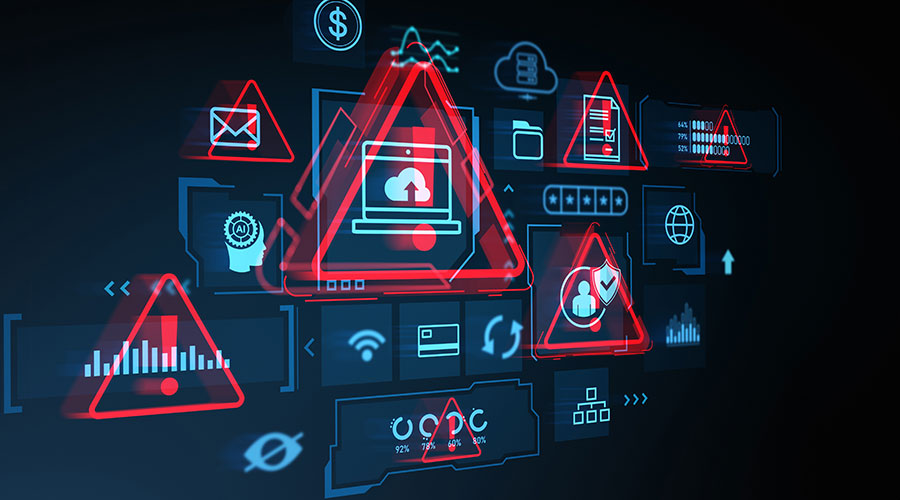This article will help you navigate through the deluge of IoT information and identify which technology choices will have the biggest positive impact on your upcoming product plans. Selecting the optimal protocol stack for your IoT solution is critical. However, in order to that, we need to talk about the gateway.
By “gateway” I really mean “Let’s have a discussion about the ideal IoT network architecture.” We are big advocates of using intelligent, on-premises gateways to manage both local and cloud-based communication.
IT’S TIME TO STOP THINKING OF “GATEWAY” AS A DIRTY WORD
We know the term “gateway” has become a bit of a lightning-rod-issue in our industry, with many arguing against the need for them. Our goal here is to make the logical argument for why we believe gateways are critical for success.
But first, let’s clarify how we define a gateway and a gateway-based network. Below is a simplified illustration of our preferred architecture. You can see that the gateway sits at the intersection of downstream user interface devices, upstream IoT devices, and the cloud.

WHY A CENTRALIZED INTELLIGENT GATEWAY IS THE BETTER ANSWER
Here’s four more big reasons why this design is superior to many of the others being considered today.
Benefit 1: No Perceived System Latency
When an occupancy sensor registers movement, the expectation is an immediate response from the devices it is controlling.
Some current architectures attempt to route all commands, including rules processing, scenes and groups through the cloud, which can introduce unwanted latency.
Having an on-premises gateway ensures response to sensor input is perceived as immediate.
For example, when a user enters a room and activates the occupancy sensor, the respective fixture(s) must illuminate at the same perceived speed as if the user flipped a physical switch on the wall.
If not, user satisfaction and trust in the overall IoT system degrades.
Benefit 2: Adding and Configuring Smart Devices Simply and Quickly
Commissioning a network, especially a large network, is one of the most time consuming and difficult operations in the network life cycle. Commissioning starts with making sure devices are part of the network (also known as “joining” or “pairing.”) It doesn’t end there.
For a control system to be smart, it needs to support the following:
-
Be able to control a group of devices in a specific way that could be different for different devices (often called a scene)
-
Be able to control devices, groups, or scenes on a schedule
-
Be able to take input from one device on the system and use that to control another device, group or scene.
-
Do all of the above in an automatic way that feels magical to the end user
Rather than having to setup each group, and schedule, and rule, the Gateway can be given a small amount of information and use this to create the configuration of the network. Smart.
Benefit 3: Uninterrupted, Internet-Independent Operation
While cloud-based control and monitoring of on-premises IoT devices will continue to be essential, attempting to move all intelligence and routing responsibilities into the cloud has so far proven to be ineffective. This is due to the latency issues mentioned above, but a larger problem involves the need for a constant connection.
Although internet connectivity and up-time have made great advances, outages and other interruptions still occur frequently. It simply isn’t feasible for users and managers to risk losing control of vital devices in their offices and homes if an internet failure occurs.
In simple terms, having an on-premises gateway creates a reliable backup should internet access be interrupted. When cloud access is unavailable, gateway-based communication continues, allowing users to have uninterrupted control from on-site.
Benefit 4: Easier to Create Rich and Useful User Interface
Every network needs a user interface. Hopefully this is used mostly for management and configuration and used only sometimes for control, since the majority of control should ideally be automated.
The most common example of a user interface is a mobile app. This mobile app needs to talk directly to the network when on-premises, and communicate through the cloud when remote.
Exposing a reasonable interface to allow the mobile app to take these actions is the responsibility of the gateway. The better this interface is designed, the easier it is to modify or create user interfaces.
Without a gateway, all devices would need to present a reasonable interface for a user application. This would add complexity to each device and would make the user interface development far more difficult.
Summary
Having a gateway do the heavy lifting ensures that users get the seamless, “It just works” control experience they expect; and that building managers get the immediate, “plug-and-play” device installation and management they require.
Matt Smithi is the head of Cortet Engineering's Colorado offices. For more information, visit http://cortet.cel.com/

 Should We Be Testing Toilet Water in Patient Restrooms?
Should We Be Testing Toilet Water in Patient Restrooms? Healthcare Union Petitions for Increased Staff Safety at HCA Florida Hospitals
Healthcare Union Petitions for Increased Staff Safety at HCA Florida Hospitals HGA Announces Completion of the Jeffrey and Patricia Cole Pavilion
HGA Announces Completion of the Jeffrey and Patricia Cole Pavilion Healthcare Facilities Look to Future-Proof Facilities
Healthcare Facilities Look to Future-Proof Facilities Yale New Haven Health Experiences Data Breach
Yale New Haven Health Experiences Data Breach